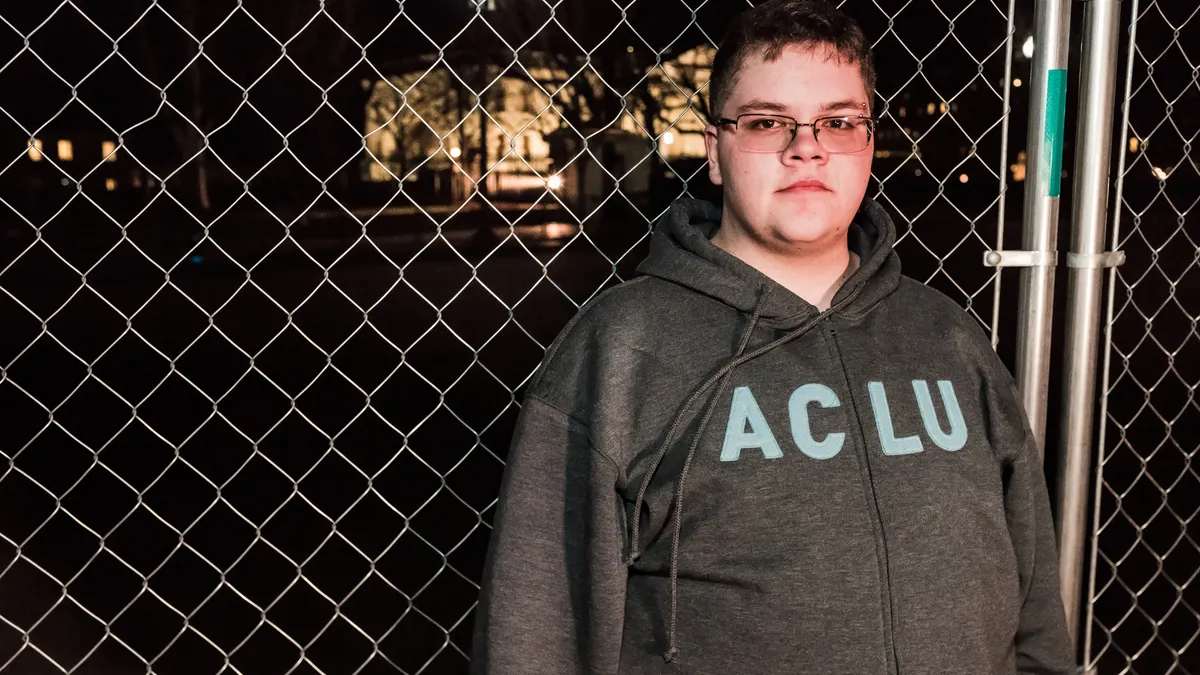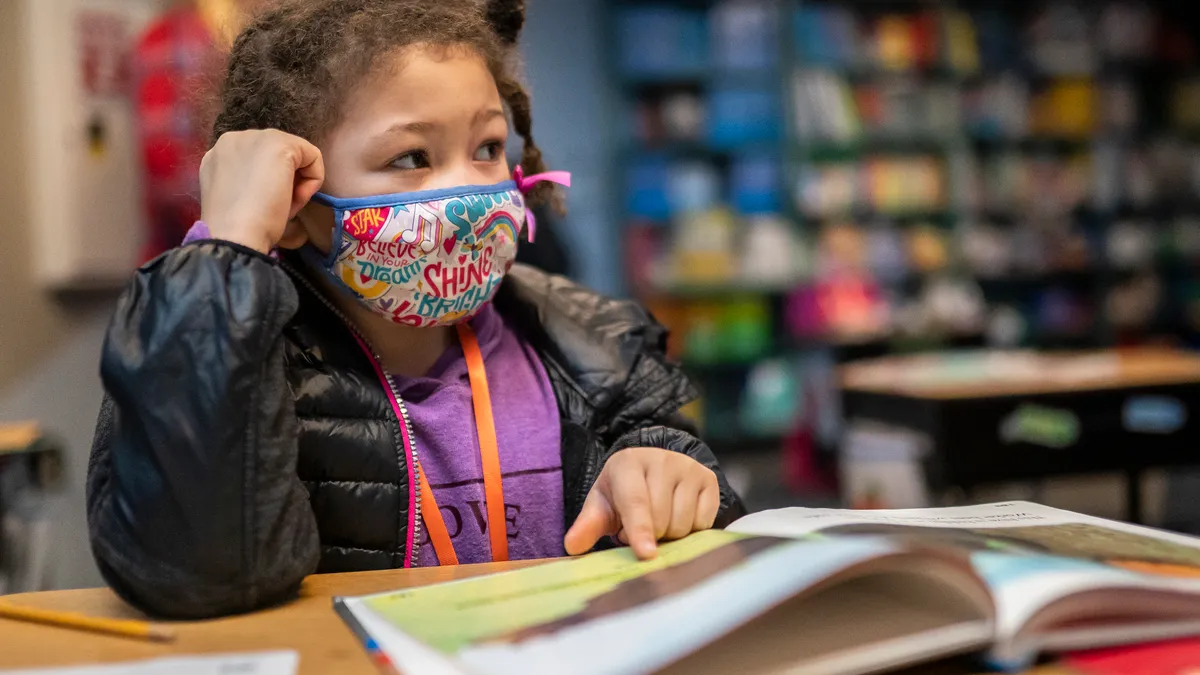As the technology editor for The Chronicle of Higher Education, Jeffrey Young knows a thing or two about MOOCs. With the publication's extensive coverage of the topic and Young's expertise on technology in higher ed, it only makes sense that The Chronicle would put out an e-book on free open learning.
Published in October and available through Amazon, Beyond the MOOC Hype: A Guide to Higher Education's High-Tech Disruption combines Young's research, which involved taking courses from the "big three" MOOC providers, with an examination of the origin of MOOCs, the questions surrounding what they mean for higher education and the opposition to them.
Education Dive caught up with Young to discuss his experience researching the e-book and what he thinks the future holds for MOOCs.
EDUCATION DIVE: What sparked the idea for the e-book?
 YOUNG: We were covering MOOCs quite a bit, and we weren’t alone. There was so much coverage of, from all sorts of angles, these free open courses in a very short time. Our first reaction was to put up kind of a topical page about MOOCs, and we have that on our site. It’s called “What You Need to Know About MOOCs.” It wasn't just the news reports, but some of the key opinion pieces that we were running on both sides. We certainly weren’t taking any sides there, but just trying to collect the stories in one place because it was moving so fast — just to give it a timeline.
YOUNG: We were covering MOOCs quite a bit, and we weren’t alone. There was so much coverage of, from all sorts of angles, these free open courses in a very short time. Our first reaction was to put up kind of a topical page about MOOCs, and we have that on our site. It’s called “What You Need to Know About MOOCs.” It wasn't just the news reports, but some of the key opinion pieces that we were running on both sides. We certainly weren’t taking any sides there, but just trying to collect the stories in one place because it was moving so fast — just to give it a timeline.
That’s useful, and it’s still there, but it seemed like there was a desire with this topic — in a different way than many of the ones we were covering at the moment — to sort of try to quickly make sense of all these different developments happening so quickly and all of the different viewpoints, all of the loud voices in all the different directions. So it seemed like an interesting idea to try to kind of pull something together, a short e-book that would give a kind of all-in-one-place narrative approach to the major issues that we’d been tracking, and the pro and the con, but in one kind of story form — kind of a guide, I guess, for those tracking the issue. And maybe those coming a little late to it who, all of a sudden, were hearing so much about it and thinking, “Wait a minute. What is this again?” Because we know that some of our readers, especially those tracking the issue maybe a little less carefully, would want to catch up in a way that was quick and readable.
So that was really how that came about. It was really just that this looked like a case where an e-book might make sense.
And The Chronicle has done previous e-books?
YOUNG: The Chronicle’s done two other e-books that we published in the last year or so.The other two were more like compilations of articles, and this one was trying to say what if we — instead of just doing a compilation of articles that were already published — what if we took an approach where we just kind of tried to have one person write through into one place the big issues and step back and make it a different format.
In the process of writing the e-book, how much do you feel you knew going into it versus coming out of it?
YOUNG: One thing that was really important is I decided that one thing I really wanted to take this opportunity to do was to take a couple of courses, to finish a couple of MOOCs and get a real sense of the three major providers that we were focused on in this particular volume. We mention others, but we were really focused on edX, Coursera and Udacity on the argument that they seem to have attracted the most partners and money behind them.
I made it a point to finish a couple courses and take the experience all the way through. That was eye-opening, just to try to think of it from a student’s perspective. I finished a Coursera course and an Udacity course. I almost finished an edX course. I ran out of time during the research, but got a real strong deep sense of an edX course, as well. This was not a goal of reviewing the platforms by any means. It was much more of a sense of getting the student’s perspective.
A couple of the things that surprised me from that experience was that it was a little bit tricky to keep up. I know everyone probably is busy in their own way, and certainly I was trying to finish these MOOCs at night in spare time. Some of them were harder than others, like the physics course that I took from a U.Va. professor, offered on Coursera. There was one quiz that I failed, and that really got my attention. I had not been taking very many notes, I will confess, and I often would be watching the baseball game on mute at home and listening to the lectures. I really wasn’t giving my full attention and it really showed up on the quiz. I was like, “Wait, I guess if I actually want to learn this material, I have to pay a little more attention.” So that was one of those things where I started taking more notes and I started approaching it a little differently, kind of trying to take it a little more seriously. The course qualities varied a little bit, but they certainly were trying to deliver a serious level of content and it took commitment.
Also, it was a little hard to keep up. Some weeks it was easy, and then, inevitably, you had a vacation or something. Some weeks, it was a little off, and it was like, “I’ve gotta get that homework in on time, otherwise it won’t get peer-graded!” You really kind of get the sense that to finish, you do have to have some discipline and stick with it.
In your research, did you notice anything in particular about format that you think could be adjusted?
YOUNG: The real interesting thing you see when you look around is how different MOOCs are. There’s sort of a basic idea of what some of them are by those big providers, but within that, there are some very different interpretations of what is MOOC? There were some that were very lecture-heavy and just kind of had what felt like professors sitting at a podium and talking. Some of those were less engaging and harder to pay attention to. But there are already examples you can point to where the professor is very dramatic or went to a location and recorded in an interesting setting and was trying to make it much more TV-like. Often those just held my attention a little better.
Basically, the different professors tried different approaches, and some of them seemed to be more popular — even when you read the forums with students — than others. The other thing you really realize is that, in some of the classes, the students are also very interested not just in the content. There was a business course I took that was out of the University of Maryland that was in entrepreneurship. “Entrepreneurial Mindset,” I believe. Some of the students were in the forums really just kind of looking for other people with ideas. One person — you turn in a peer assignment, and the way it works is you write a kind of a short essay or give an idea, and other people would grade it and you grade other people’s, and you sort of all come back — and one of the people, when they graded mine, said, “This is interesting. I’m a businessperson. Let’s talk. Here’s my e-mail.”
So there’s this interesting way in which you realize that just having the lecture videos is not necessarily the main motivation for some of the students, who might’ve just been taking a course somewhere else and they wanted the videos to supplement that, or maybe they were looking for business partners, or looking to kill some time. You just kind of realize that maybe not everybody’s thinking of it as kind of a home game of an actual course, but maybe something different.
Was there anything you found particularly fascinating about MOOCs?
YOUNG: For me, having covered higher education for a while, the really interesting thing about MOOCs — and how big of an impact they make is still up in the air — is the way they’ve changed the conversation around teaching in higher education, at least from a lot of the quarters I’ve talked to. It seems like people are taking more seriously the thought that lectures aren’t always best or that there are other things that universities should try, whether they involve having technology or not. That and the fact that, in a way, MOOCs have also come hand-in-hand with some serious questions about the value of college and what college should be and whether it’s meeting its purpose and lives up to the cost.
These are serious questions that I think the institution of higher education is facing from more and more quarters. There’s this sort of argument in the book that MOOCs come at a time where they’re sort of being latched onto as a wedge for people that want to talk about broader issues that I think are even more interesting than MOOCs themselves.
And there were two interesting pieces of MOOC news that came out this week that I’m sure you saw as well, with Sebastian Thrun indicating that Udacity’s future may be in vocational learning and a Coursera study revealing that the majority of MOOC users were actually well-educated men. Do you have any thoughts on these, as well as where you see MOOCs going based on your research?
YOUNG: Sure. I think people are seeing this data and some of the early leaders thinking through where they really fit, and it’s a big question of MOOCs — who do they serve and how they can be fit into a broader set of reforms, if any, to higher education. I think the reminder is that not everyone is maybe ready to take an online course. Some people are simply good at the whole format that a MOOC is, which is kind of a replication of how a college course works. You have some content in a lecture video, do an assignment and turn it in on time, and stay on task and do that week after week.
Those are all skills that people who have gone to a college are familiar with. If you’re trying to gear things toward people who have maybe not had as much experience — that are first generation or non-college students or never went to college in one way or another — that’s taking for granted the fact that they know the drill. The question is, and there are already a few experiments tried, can they reach audiences underserved in higher ed? I think it’s harder than some of the proponents first thought, but then the question is is it possible or not. I believe Coursera is still attempting it, and maybe Udacity is going to shy away a little bit. I think the question’s not fully answered, but it does suggest that maybe it’s not quite as easy as some people thought out of the gate.

The following is an excerpt from the e-book "Beyond the MOOC Hype" by Jeffrey Young, technology editor for The Chronicle of Higher Education, and published by The Chronicle.
Prologue: Bucky’s Education Vision
If Epcot had a ride focused on education, it would likely have included ideas from R. Buckminster Fuller, or Bucky, as he reportedly liked to be called. The visionary designer, who lived from 1895 to 1983, is best known for popularizing the geodesic dome, the shape used in the theme park’s iconic main building and a symbol of disruptive architecture. But late in his career, he argued for a new kind of college campus and a new approach to teaching. What Bucky sketched in a series of essays and talks sounds strangely familiar in today’s conversations about MOOCs.
Fuller is the kind of thinker who would certainly be giving TED talks if he were alive today. He fits a uniquely American mold of the self-made high-tech optimist. He was kicked out of Harvard University (twice), studied logistics in the Navy during World War I, and after a period of failure and drunkenness, reinvented himself as a self-trained architect, entrepreneur, and futurist.
His geodesic dome was a marvel of efficiency, able to stand with no supporting beams or buttresses. As a 1964 cover story about Fuller in Time magazine explained, “the geodesic dome uses less structural material to cover more space than any other building ever devised.”
He produced other groundbreaking designs in a range of areas, including a three-wheeled car with an aerodynamic design in an era of boxy chassis, a new way to render maps to avoid distortion, and a bathroom that was almost waterless. For all of these inventions he applied a brand name that became his personal trademark: “dymaxion,” a mash-up of the words “dynamic,” “maximum,” and “ion.”
Fuller got rich from his domes, but he was largely uninterested in money. Once he proposed a new design, he quickly wanted to move on to the next project, the next big idea. In the late 1950s he took a job as a research professor at Southern Illinois University at Carbondale, which let him spend most of the year giving lectures around the world.
In the early 1960s, before the Internet, Fuller predicted a system of two-way television that would give everyone access to an up-to-the-minute video encyclopedia. “Children will be able to call up any kind of information they want about any subject and get the latest authoritative TV documentary,” he said in a 1962 talk.
Once such a knowledge system was in place, he argued, formal education would change. There would be no need for professors at colleges to stand up in front of their classes and give lectures. Instead, a professor would record a perfect version of his or her lectures to add to the global video archive. Fuller imagined that such lecture performances would take place before a kind of focus group, which would judge the clarity of the orations and even suggest improvements. Professors, as he put it, “will give their basic lecture course just once to a group of human beings, including both experts in their own subject and bright children and adults without special training in their field.”
Fuller imagined a vibrant science of instruction, where experts would develop new ways to enhance those video lectures with supplementary materials that would be rigorously tested and proved. “I am quite sure that we are going to get research and development laboratories of education where the faculty will become producers of extraordinary moving-picture documentaries,” he said. “That is going to be the big, new educational trend.”
The provocative title of his talk was “Education Automation,” two words that must have appeared particularly contradictory at the time. The notion fit into Fuller’s overall worldview, that society could be improved through better design, and that old ways should be pushed aside once new high-tech opportunities emerged.
“He wanted to go back to basic principles, to understand the nature of a problem and solve it at a fundamental level, rather than just go along with how your grandparents do it,” says Amy C. Edmondson, a professor of leadership and management at Harvard Business School.
Ms. Edmondson first heard Fuller speak while she was an undergraduate at Harvard. She says she was “mesmerized” by his message. “It was just paradigm-changing stuff,” she explains. “It made you think, ‘Wait a minute, I don’t have to think about it this way.’” She wrote Fuller a fan letter, and was surprised to get a reply inviting her to work for him. She served as an engineer for Fuller for three years.
“He talked in a general sense about education all the time, in that he was strongly advocating people doing your own thinking,” she says. “He thought learning had to be sort of lifelong and widely accessible.”
Fuller believed that jetpacks were really coming, and that technology would improve the lives of everyone on the planet. As the Time profile concluded: “He is sure the whole world can be fed, housed and happy, if designers can just put to work all the world’s skills with Fuller-like efficiency.”
Similar beliefs undergird many of today’s experiments with free online courses. The idea of automating education is back, and it’s bigger than ever.
Would you like to see more education news like this in your inbox on a daily basis? Subscribe to our Education Dive email newsletter! You may also want to read Education Dive's 5 failed education startups you should study.
















